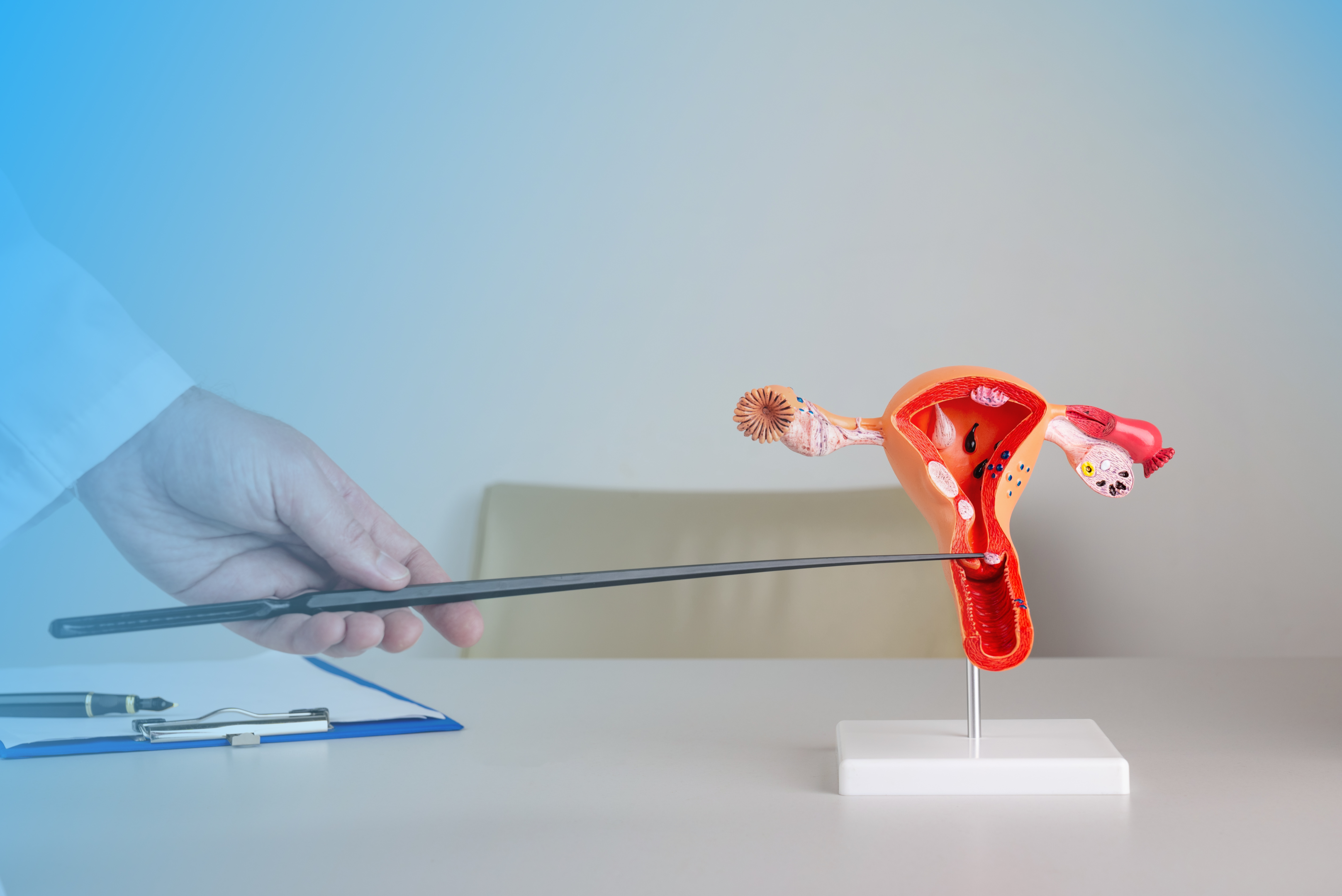Endometriosis and Surgery: everything you need to know


'Endometriosis' arises from the word 'Endometrium', which is the inner lining of the uterus. The endometrium is the thick stromal layer with a rich blood supply and glandular mass. The cells and tissues in this lining are called endometrial tissue.
Endometriosis is the abnormal growth of endometrial tissues in organs other than the uterus. This may occur due to a variety of reasons and the most common of which is retrograde menstruation. Retrograde menstruation is the backflow of menstrual blood to the fallopian tubes and adjacent structures, giving rise to endometriosis in the fallopian tubes or ovaries. Other areas where endometriosis may occur are uterine ligaments, urinary bladder, and bowel. Involvement of any organ in this disease condition will present itself with pronounced symptoms that would help in the diagnosis and on-target treatment of endometriosis.
Most symptoms of endometriosis are related to frequent episodes of blood loss through the vagina and pelvic discomfort. A female may remain unaware of her endometriosis unless her painful periods get unbearable and she needs medical attention.
Women with endometriosis explain their pelvic pain to be far worse than pelvic pain caused by menstruation. These pains may come and go irrespective of menstruation.
Endometrial tissue grows each month on a rich blood supply. The growth of these tissues is regulated by hormones. During menstruation, as the progesterone hormone in the blood decreases, the endometrium also starts to shed away. The menstrual period is heavy in endometriosis because endometrial tissue has also grown in the fallopian tubes. This causes heavy bleeding, the most common symptom in females with endometriosis, as they frequently need to change their sanitary pads or replace period cups/tampons.
Painful menstrual cramps may be due to the heavy menstrual flow of females with endometriosis. This pain starts before the onset of menstruation and is felt for a further few days after the menstruation ends.
Urination and defecation get painful when there is the involvement of the urinary bladder and colon in endometriosis.
 Diagnose Endometriosis
Diagnose EndometriosisDeveloping endometriosis can be diagnosed by the OB/GYN expert through a physical and pelvic exam. The symptoms of endometriosis are usually enough to finalize the diagnosis but a thorough investigation should still be followed. The following diagnostics are suggested to help in the diagnosis of mild to moderate and advanced endometriosis:
Ultrasound
MRI scan
CT scan
In severe cases, medications might not stop the growth of these tissues; it is a temporary relief. So, surgery is the only option for it. Let us discuss endometriosis surgery in detail.
Once endometriosis is diagnosed, the treatment plan is designed by the doctor according to the severity of the disease condition. In mild to moderate cases, certain lifestyle modifications and painkillers prescription will do the treatment of endometriosis. Doctors usually prescribe non-steroidal anti-inflammatory drugs (NSAIDs) to relieve severe pelvic pain due to endometriosis. NSAIDs help in the blockage of prostaglandins production, which are the chemicals that cause active contraction and pain due to menstruation. These drugs will also help with controlling the menstrual blood flow. With medical intervention, the endometriosis tissue goes away, leaving only scar tissue behind.
In severe cases, medications might not stop the growth of these tissues since it is a temporary relief. So, surgery is the only option. Let us discuss endometriosis surgery in detail. There are three types of surgical treatments to eradicate endometriosis:
Laparoscopy
Laparotomy
Hysterectomy
It is a process to diagnose and treat endometriosis in which a small thin tube with a camera and light called a laparoscope is used so that the doctor can see the inside of the abdominal or pelvic cavity. General anaesthesia is given before surgery, which means you will be asleep and feel no pain during surgery.
The laparoscope is inserted at one side of the small incision, and the surgical instrument is inserted from another opening. Through this process, surgeons remove as much endometriosis tissue as possible from organs like ovaries, bladder, fallopian tubes, and rectum. Then the gas and instruments are removed, and the cuts are closed at the end. Laparoscopy is an outpatient procedure. You can go home after recovering from anaesthesia.
This surgery is done if doctors are unable to remove tissues from laparoscopy. It is done in advanced endometriosis. Laparotomy is also done under general anaesthesia. It is an open, major abdominal surgery with larger incisions (cuts).
The surgeon uses surgical tools to remove endometriosis tissue from the involved organs. After the removal, the doctor will close the cut and move you to the recovery area. After the laparotomy, you must stay for at least one night in the hospital.
This surgery is done when you have no plan to have children in the future. In this procedure, your uterus will be removed. Some or all reproductive organs must be removed as well if they are damaged or have endometrial tissues on them. A hysterectomy will provide long-term relief from the pain of endometriosis.
This procedure will be done after your agreement with a doctor before surgery. Doctors usually recommend a hysterectomy when your symptoms do not go away despite other treatments. It can be done through laparoscopy or laparotomy or by removing organs through your vaginal opening.
Although endometriosis can be challenging for many women, it can be treated through surgery. You can get pain relief and there is an increased likelihood of getting pregnant. However, if the small tissue is left in the abdomen, you can still have symptoms, depending upon your surgical procedure to remove all cells of tissues. So, look at the pros and cons of the treatment and discuss it with your doctor. The most important thing is your overall physical and mental health wellness.
To find a suitable pain relief medication for your concerns, complete an online consultation with us here.








Plus get the inside scoop on our latest content and updates in our monthly newsletter.